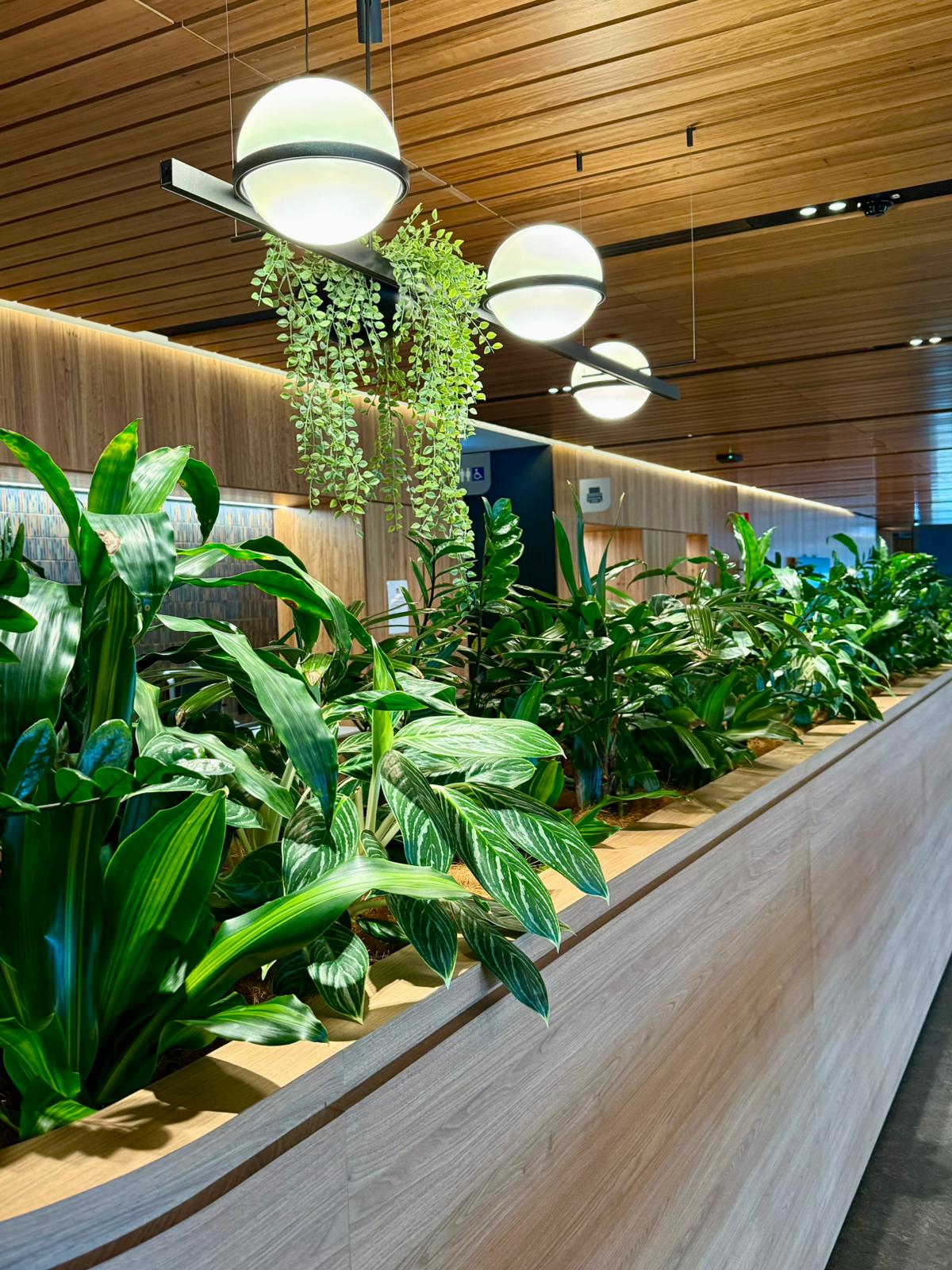Boost Productivity and Wellness: The Ultimate Guide to Office Plants
Boost Productivity and Wellness: The Ultimate Guide to Office Plants
Blog Article
Introduction: Why Office Plants Matter More Than Ever
In today’s fast-paced, digital-first workplaces, the importance of creating a healthy and uplifting environment is greater than ever. office plants, once seen as simple décor, are now recognized as powerful tools to enhance mood, reduce stress, purify the air, and increase productivity. From adding a splash of greenery to improving mental health, the benefits of incorporating plants into office spaces are backed by science and appreciated by employees. Whether you're designing a new office layout or simply want to brighten your cubicle, plants offer a simple yet effective solution.

1. The Benefits of Office Plants
A. Improved Air Quality
Indoor air can often be more polluted than outdoor air due to dust, chemicals, and poor ventilation. Plants such as the Peace Lily, Spider Plant, and Areca Palm naturally filter toxins and produce oxygen, resulting in a fresher and healthier indoor atmosphere.
B. Reduced Stress and Anxiety
Studies have shown that simply looking at greenery can lower stress levels. The presence of plants in the workplace has been linked to reduced anxiety, better mood, and overall psychological well-being.
C. Enhanced Productivity and Creativity
A 2014 study by the University of Exeter found that productivity increased by 15% when plants were added to a previously barren office. The calming presence of plants helps improve concentration and encourages creative thinking.
D. Noise Reduction
Larger indoor plants can help absorb background noise, especially in open-plan offices. Strategic placement of plants can create natural sound buffers and contribute to a quieter, more focused workspace.
2. Best Low-Maintenance Office Plants
A. Snake Plant (Sansevieria)
Known as the "mother-in-law’s tongue," this plant is virtually indestructible. It requires minimal watering and thrives in low light—perfect for office settings.
B. ZZ Plant (Zamioculcas zamiifolia)
This glossy-leaved plant is both attractive and extremely low-maintenance. It tolerates low light and doesn’t need frequent watering, making it ideal for busy professionals.
C. Pothos (Epipremnum aureum)
One of the easiest plants to grow indoors, pothos is perfect for hanging baskets or climbing on trellises. It thrives in a variety of lighting conditions and requires very little attention.
D. Peace Lily
Besides its air-purifying qualities, the peace lily adds elegance with its white blooms. It prefers moderate light and only needs watering once the soil is dry.
E. Spider Plant
With its cascading green and white striped leaves, the spider plant is visually appealing and very easy to care for. It’s also a top performer in removing pollutants from the air.
3. Tips for Caring for Office Plants
Know the Light Levels: Assess the natural light in your office and choose plants that will thrive in those conditions—some prefer bright indirect light, while others do well in low light.
Water Wisely: Overwatering is one of the most common mistakes. Most indoor plants prefer their soil to dry out between watering. Use pots with proper drainage to avoid root rot.
Regular Cleaning: Dust can accumulate on leaves and block sunlight absorption. Gently wipe the leaves with a damp cloth to keep them clean and healthy.
Use the Right Containers: Choose pots that match your office décor while ensuring they have good drainage. Self-watering planters can be helpful for maintaining moisture levels.
Avoid Drafts and Extreme Temperatures: Keep plants away from heating vents, AC units, and drafty windows, as sudden temperature changes can harm them.
4. Creating an Office Plant Strategy
A. Desk Plants for Personal Spaces
Small potted plants like succulents, cacti, or mini ferns are perfect for personal desks. They add a personal touch and help create a calming micro-environment.
B. Common Areas and Lounges
Larger floor plants like Rubber Plants or Monstera can make communal areas more inviting. Greenery can also be used to divide space in open offices.
C. Conference Rooms
A minimalist centerpiece with a stylish indoor plant like the Peace Lily or a tall Dracaena adds sophistication to meeting rooms without being distracting.
D. Reception Areas
Make a great first impression with eye-catching arrangements. Palms, Anthuriums, or Bonsai trees create a warm welcome for clients and guests.
5. Plant Décor Trends in Modern Workspaces
With the rise of biophilic design—an approach that connects people with nature—office plants are being used not just for decoration, but as design elements. Vertical gardens, moss walls, and hanging planters are becoming popular in offices looking to balance aesthetics with wellness. Companies are also incorporating plant-filled zones that act as relaxation corners or informal meeting spaces to encourage interaction and reduce burnout.
Conclusion: Bring Life Into Your Workplace
Office plants are more than just green accessories—they’re an investment in health, productivity, and workplace happiness. From improving air quality to fostering creativity, the benefits are tangible and long-lasting. By choosing the right plants and maintaining them properly, you can transform even the most sterile office plants into a vibrant, inspiring space. So go ahead—add a splash of green to your desk or conference room and watch your workspace come to life.
Report this page